Discovered locked in an embrace at the moment of death, the Hasanlu Lovers were victims of a bloody massacre that took place in present-day Iran in 800 B.C.E.
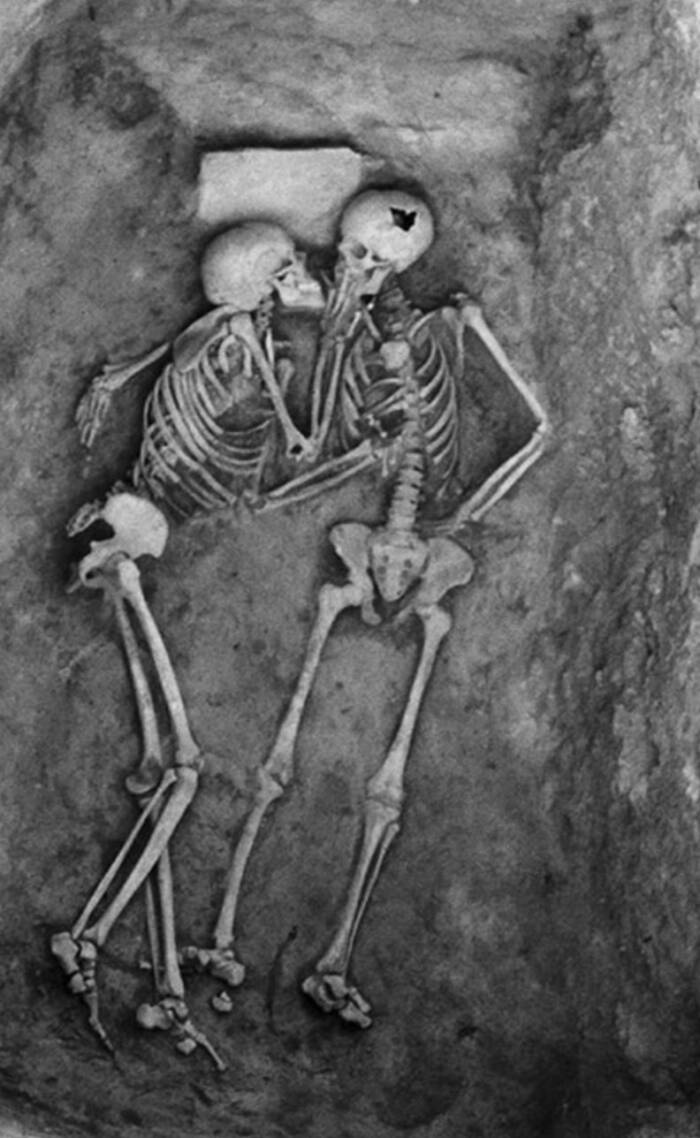
The University of Pennsylvania Museum of Archaeology and Anthropology
The Hasanlu Lovers, a pair of intertwined skeletons who seem to be sharing a tender moment.
While excavating the site of a 2,800-year-old massacre in present-day Iran, archaeologists were surprised to come upon a pair of intertwined skeletons. The skeletons seemed to have died while sharing a passionate embrace, which earned them the nickname the “Hasanlu Lovers.” But their story is more complex and mysterious than it seems.
For starters, many initially assumed that the Hasanlu Lovers were a heterosexual couple. But subsequent studies have suggested that both skeletons are likely male. What’s more, scientists have argued that it’s impossible to know exactly how the two people knew each other — that is, they may not have been lovers at all.
They could have been friends, family members, or even strangers who reached for each other during a time of terrible tragedy and death. Indeed, our interpretation of them as lovers — and as heterosexual lovers — is based on a modern viewpoint which may obscure the truth.
This is the story of the Hasanlu Lovers, from their death in a mysterious 800 B.C.E. massacre, to the debate over their relationship today.
The 800 B.C.E. Massacre At Teppe Hasanlu
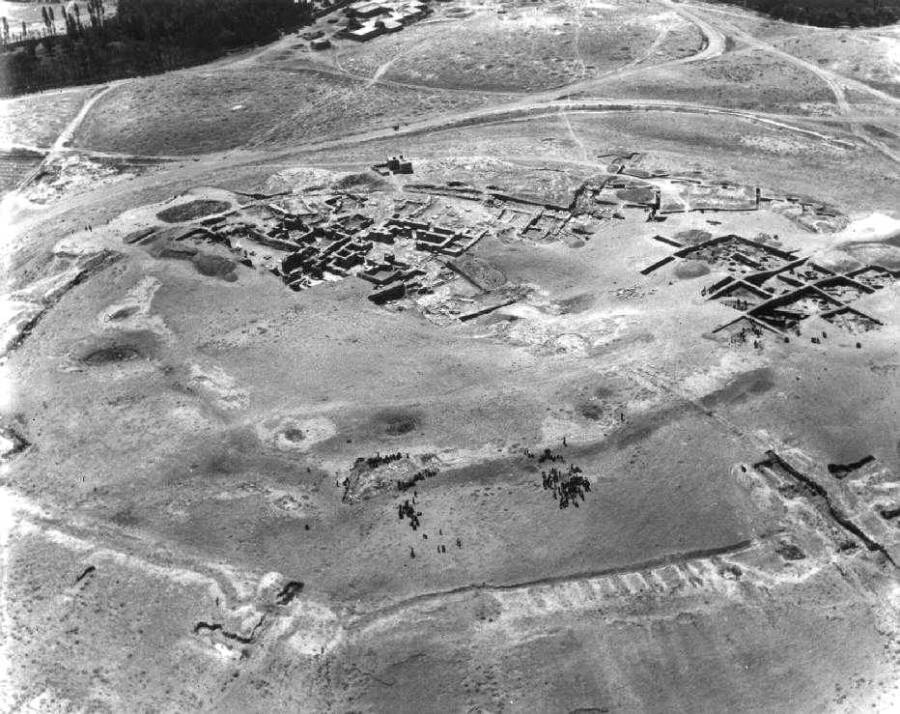
Amin gholizad/Wikimedia CommonsTeppe Hasanlu was the site of a populated settlement for hundreds of years, before it was destroyed in a massacre.
The story of the Hasanlu Lovers began back in 800 B.C.E., at a settlement located in the northwest corner of present-day Iran. According to the Metropolitan Museum of Art the settlement had been continuously occupied since the Bronze Age. It was located near Lake Urmia and major trade routes of the day, and became a thriving hub of art and commerce.
Then, everything changed.
Some 2,800 years ago, the settlement was brutally attacked by an unknown invader, possibly the powerful Urartu. The attackers killed hundreds of people, many where they stood, and burned the settlement to the ground.
But when archaeologists explored the Teppe Hasanlu archaeological site thousands of years later, they found that the massacre also meant that the settlement had been frozen in time. Many victims of the attack were found where they had been killed in the streets, or where they’d perished in burning buildings. The attack had also preserved a pair of skeletons, who archaeologists found intertwined in the 1970s.
They became known as the Hasanlu Lovers.
The Discovery Of The Hasanlu Lovers
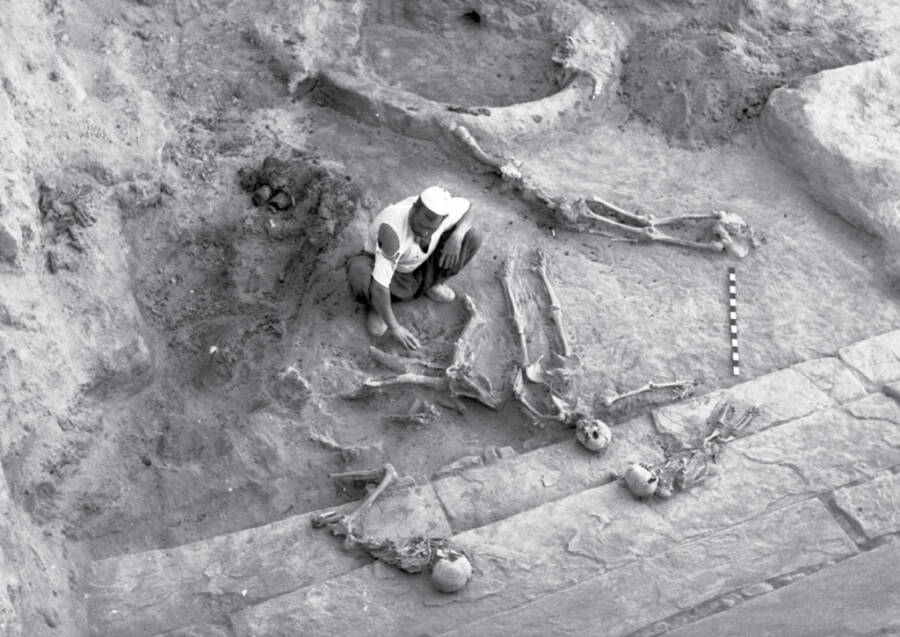
The University of Pennsylvania Museum of Archaeology and Anthropology
Hundreds of people were slaughtered 2,800 years ago as invaders moved through the settlement and burned it to the ground.
In 1972, archaeologists from the University of Pennsylvania discovered the Hasanlu Lovers in a mudbrick and plaster bin. Their final pose is evocative — the two skeletons are locked in an embrace and seem to be sharing a final kiss. For this reason, many initially assumed that the two were “lovers” who spent their last moments in each others’ arms.
The first skeleton, Sk 335, was found lying on its back. Sk 335 was between the ages of 19 and 22 years old when they died, and seemed to be in good health. The second skeleton, Sk 336, was lying on its left side, with its right hand touching the other skeleton’s face. Sk 336 is estimated to be between the ages of 30 and 35 years old and was also in good health.
Initially, researchers identified Sk 335 as male, and Sk 336 as female.
According to the Penn Museum, Sk 335 and Sk 336 were victims of the 800 B.C.E. massacre. Both skeletons bear some trauma from the attack, though no obvious fatal wounds, and researchers speculate that they climbed into the bin to hide — though it’s also possible they were placed there. They died there together, lying close, possibly of suffocation.
Dubbed the Hasanlu Lovers, the two skeletons were put on display at the Penn Museum in the 1970s and 1980s. The story of the intertwined skeletons touched many, especially since they were presented as doomed lovers who’d died tragically in each others’ arms.
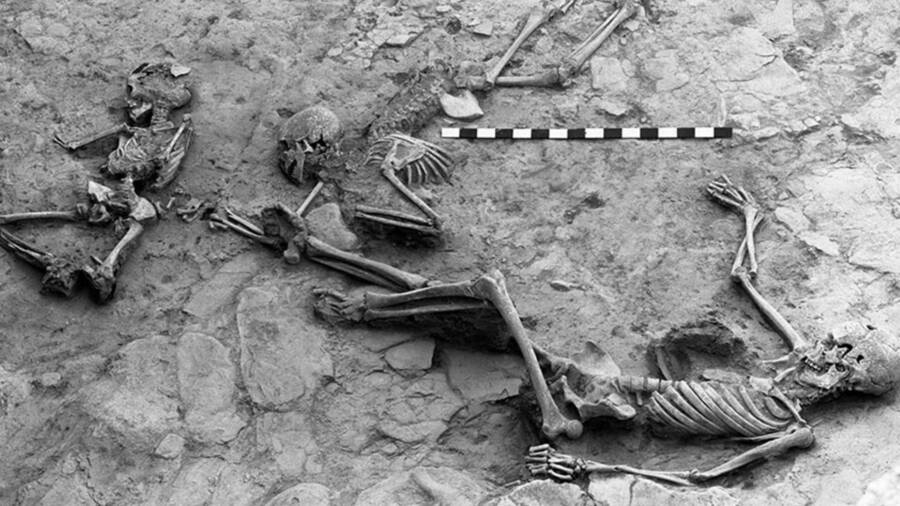
The University of Pennsylvania Museum of Archaeology and Anthropology
Many victims of the 800 B.C.E. massacre were found where they had fallen.
But scientists have cautioned since that much of our interpretation of the Hasanlu Lovers is based on modern biases. This is especially true since the Hasanlu Lovers were assumed to be heterosexual lovers — and recent studies have shown that Sk 336 is likely to be male.
Who Were The Hasanlu Lovers?
Were the Hasanlu Lovers lovers? Maybe, though they weren’t heterosexual ones. But it’s also possible that the Hasanlu lovers were not lovers at all.
Indeed, they could have been friends, family members — or even strangers. As their city burned and the invaders drew closer, the Hasanlu Lovers could have hidden together in a panic, and then tried to comfort each other.
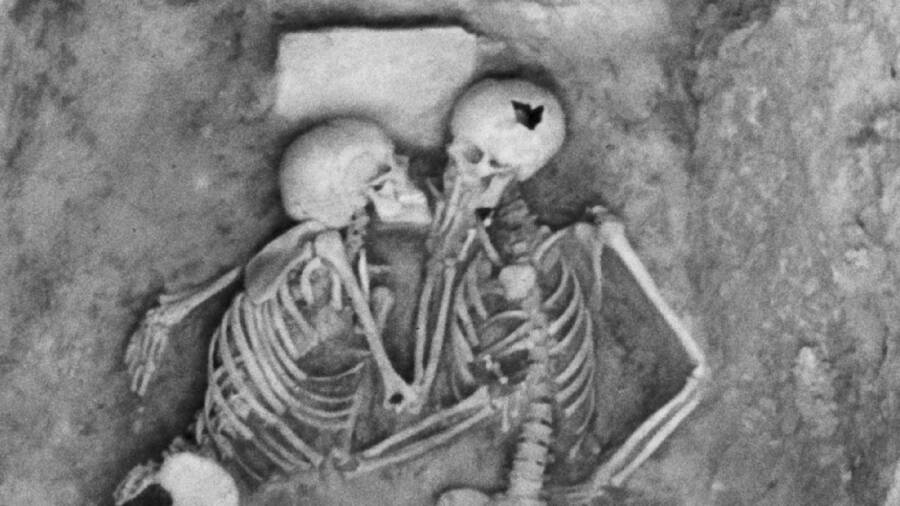
The University of Pennsylvania Museum of Archaeology and AnthropologyA closer look at the Hasanlu Lovers.
“Human experience is full of difficult times and the need for comfort from other,” the Penn Museum wrote about the Hasanlu Lovers. “As these two individuals and the other inhabitants of Hasanlu faced their darkest hour together, an embrace from a friend, lover, relative, or even a stranger might have been a natural outcome of extreme duress.”
And that’s not the only mystery about the Hasanlu Lovers.
For one, how did they get into the grain bin? Did they climb inside, or did someone put them there? For another, why didn’t archaeologists find other artifacts — i.e. personal belongings — in the grain bin alongside the Hasanlu Lovers? Other victims of the 800 B.C.E. massacre were found with items like bracelets and anklets, but why didn’t these two skeletons have them?
Many of these questions are impossible to answer. Almost 3,000 years have passed since the Hasanlu Lovers lost their lives in a bloody, terrifying, and mysterious massacre. Despite speculation, we’ll likely never know for sure how these two people spent their final moments.
After reading about the ancient intertwined skeletons found in Iran known as the Hasanlu Lovers, discover the story of the Lovers of Valdaro, the Stone Age couple seemingly locked in an eternal embrace. Or, go inside the incredible story behind the Pulitzer Prize winning photo, the “Kiss of Life.”





